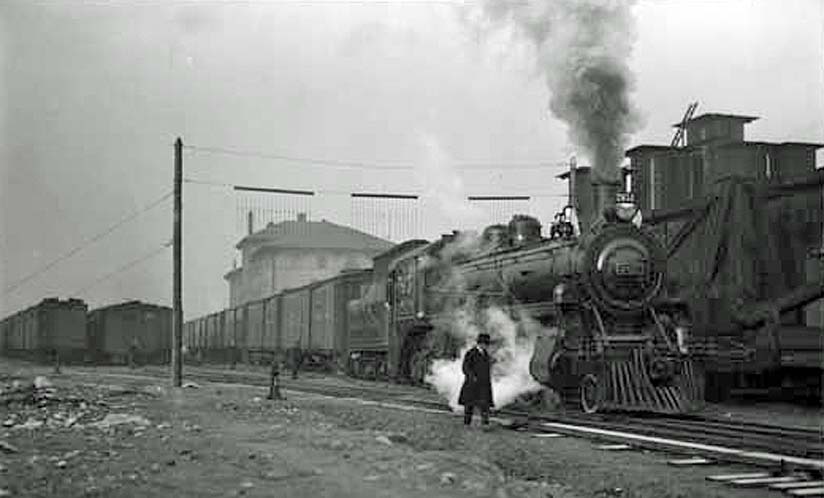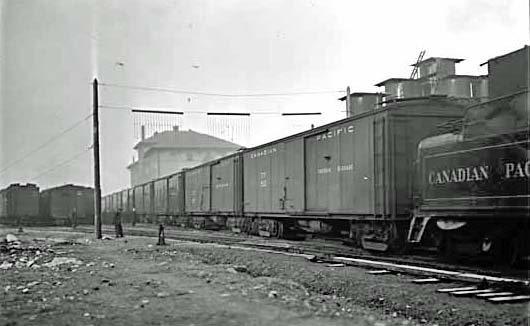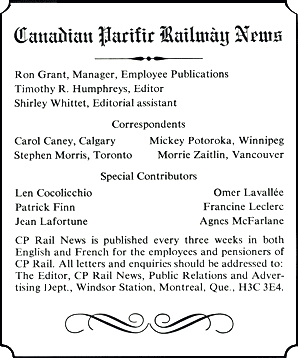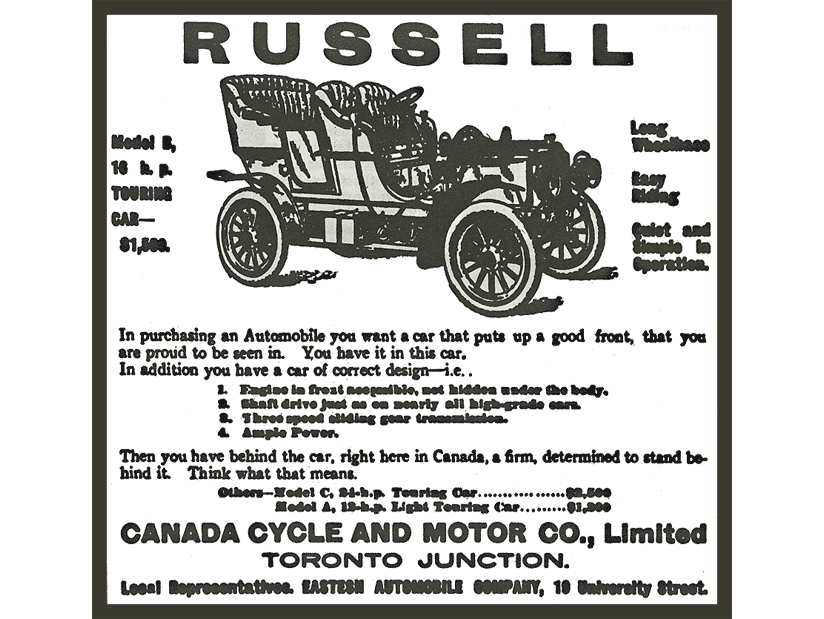
|
VOLUME XI
NUMBER 2 |
FEBRUARY 16,1981 CENTENNIAL ISSUE
|
|

God Help the Railroader Who Delayed One
By Jean La fortune
When Christopher Columbus set sail in search of the gateway to the Orient he hoped to find the shortest route by which to transport the riches of the Far East,tea,spices,and silk.
But once on the American continent,he discovered,to his great surprise,that none of these precious goods existed here,not even silk. Few dreamed the day would ever come that the silks of Cathay would be transported across this new continent.

But,in the early 1900s,North American fashion dictated that clothing,such as women's stockings,scarves,and dresses,be manufactured from this lustrous material. It was this market demand that fostered the legendary Canadian Pacific Railway silk trains.
The "silkers",as they were referred to,were given top priority all across the line from Vancouver to their eastern destinations and these steam powered trains,which carried the precious cargo of live silkworms and raw silk material sometimes worth $10 million,set speed records still in effect today as a result.
As one dispatcher put it. "They had a clear board,right across Canada. There never was a signal set against a silk train,and God help the railroader who let one be delayed."

The reasons for the speedy transportation of the silk were threefold.
The multi-million dollar cargo posed a tempting lure for bandits. There was also the danger of spoilage as silk must be kept in a dry environment. A more urgent reason,however,was the sharp fluctuations in price,for silk was usually consigned to a bank or brokerage house,not a silk mill,and like other commodities,was traded on the stock exchange. A few hours delay could wipe out a fortune. Rapidity then was of the utmost importance.
Canadian Pacific had a lot going for it in getting the silk to market. Its Empress ships were the largest and fastest liners on the Pacific and had ports of call at Shanghai,Kobe,Yokohama,and Hong Kong. And its trains were far from being slow. On one run,a silk train passed through Fort William 48 hours after leaving Vancouver. It travelled the 133 miles between Brandon and Winnipeg in 131 minutes,that's more than 100 miles an hour. Cargos handled by Canadian Pacific were being delivered in New York 13 days after leaving Japan,a time the American railways found themselves unable to compete with.
The majestic white Empress ships would dock at Vancouver harbor full of raw silk material bundled in straw-matting or brown paper,and live silkworms contentedly feeding on mulberries and spinning their cocoons from which thread is unravelled to make ties,gowns,and undergarments.
The special trains that later became famous would be waiting at the docks. The silk cargo would begin to be unloaded and put into specially designed freight cars before the passengers would even begin to disembark.
Everyone was working against time. Everyone and everything was in motion,bales,trucks,and men,weaving and interweaving. No man bumped another man,no truck collided with another truck,no combination of man,truck,and silk ever hesitated on its course. One could have sworn there was perpetual motion.
This frantic pace would continue from Vancouver harbor to the cargo's final destination at New York or Hoboken,New Jersey. The "silkers" had no schedule and inherited top priority across the system. Regular trains would have to take the "hole" (pull into a siding) to allow the highballing trains through. There were no exceptions.
On one occasion in December,1919,the late Prince George,Duke of York,who later became King George VI,arrived on the Empress of Russia at Vancouver enroute from Hong Kong to spend Christmas with his family at Windsor Castle. His ship had been delayed by fog and a special section of a CPR passenger train had been kept waiting to hurry the royal passenger to the eastern seaboard and connection with a steamship over the Atlantic.
The prince's train pulled out of Vancouver at midnight. Almost four hours later,a silk train also started east. Before noon of the next day,in the Rockies,the royal train pulled into a siding as the "silker" thundered by.
A conductor was said to have told the inquisitive prince,"In this country silk has rights over everything."
The era of the "silkers" lasted into the 1930s when transportation of silk by rail slumped to an all-time low. This downward trend was due,
in part,to the depression,and to the introduction of materials like nylon and rayon. Also,nearly 90 percent of the entire movement of silk was now
arriving in the United States by an all-water route through the Panama Canal. The all-water gateway to the Orient had been discovered.

